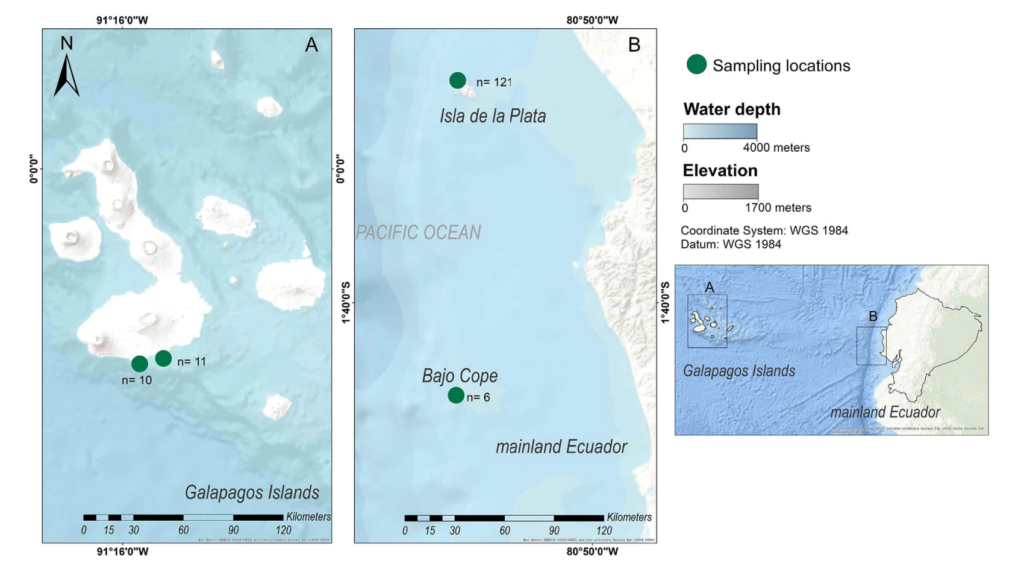Fig. 1. Mobula birostris sample collection sites off mainland Ecuador and in the Galapagos Islands. Green dots: collection sites; number of samples is displayed next to each dot. This map was drawn using ArcGIS Desktop v.10 (ESRI 2020)
Abstract
The giant manta ray Mobula birostris is the largest ray species in the world. Little is known about its genetic composition in key aggregation sites such as the Galapagos Islands and Isla de la Plata, near the province of Manabi in mainland Ecuador. This study aimed to determine the genetic diversity and population structure of M. birostris in these 2 locations to better understand its connectivity and distribution in Ecuadorian oceanic waters and to assist in its conservation and appropriate management. A total of 127 samples from mainland Ecuador (2013−2018) and 21 samples from Galapagos (2019) were collected and analyzed using 8 microsatellite loci. Results showed a moderately high level of genetic diversity for giant manta rays from both sites (mainland Ecuador He = 0.72; Galapagos He = 0.66). Population structure analyses suggests the presence of 2 different populations in the Galapagos and mainland Ecuador. The different genetic compositions found for each location could be associated with the displayed resident behavior, linked to the formation of upwelling systems caused by oceanic currents that bring nutrient-rich waters to both sites year-round. Our genetic connectivity analysis confirmed low gene flow between these 2 locations, further rejecting the hypothesis of a single panmictic population of M. birostris in Ecuador. Taken together, these results provide valuable information about the genetic composition and diversity of the giant manta ray, an Endangered species which has been scarcely studied in the Eastern Tropical Pacific.
Keywords: Genetic variability · Population structure · Conservation · Residency patterns · Ecuador · Mobula birostris
Read the article in the link: www.int-res.com/articles/meps_oa/m699p075.pdf






